In the heart of New Haven, Connecticut, a magnificent structure of Beaux Arts grandeur rises above Elm Street. A testament to the city's rich history, the New Haven County Courthouse has stood for over a century, its white marble façade gleaming amidst the downtown bustle.
More than a historical monument, the courthouse embodies the spirit of justice and the pursuit of architectural excellence that define New Haven.
Architectural Details and History
The courthouse's exterior epitomizes elegance and attention to detail, a seamless blend of form and function. Bathed in the glow of white Vermont marble, the courthouse stands tall, its rectangular mass punctuated by projecting sections of varying depths on each side.
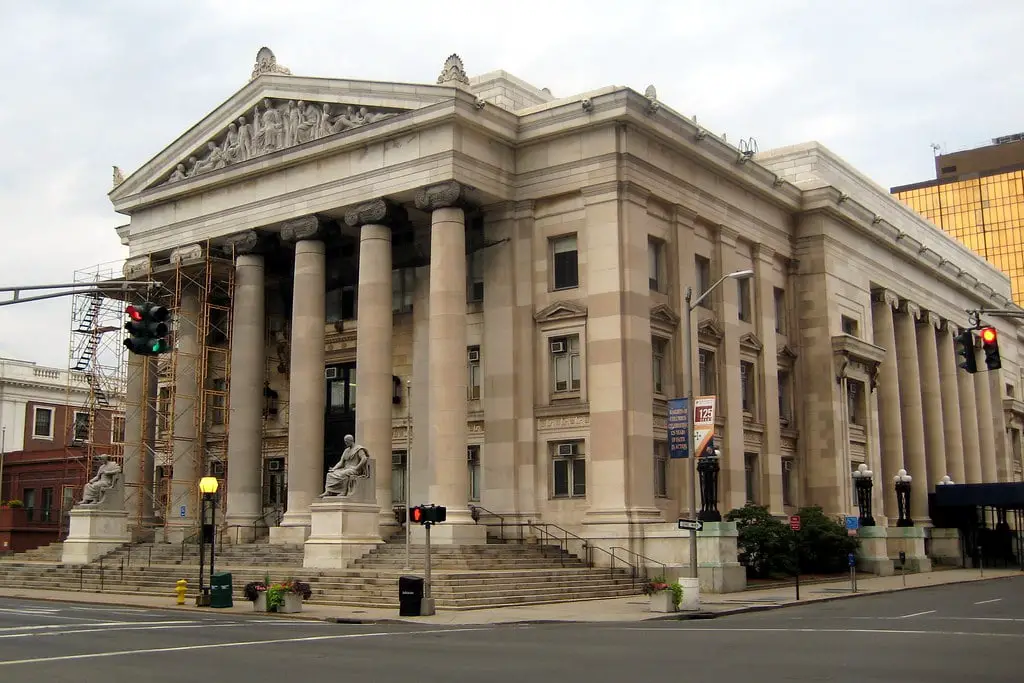
Step closer, and you'd find two street-facing projections housing the main entrances, their grandeur enhanced by Ionic porticos. The central section adds a different story as you crane your neck, adding prominence to the impressive central atrium.
Inside, the courthouse is a symphony of artistic detail. The luxury of richly ornamented finishes of marble, mahogany, brass, and plaster greets visitors, a visual feast for the eyes.
Doors with heavy brass knobs bearing the county seal add to the courthouse's historical aura. It's not hard to imagine the countless individuals who have walked these halls, and each knob turns a moment etched in time.
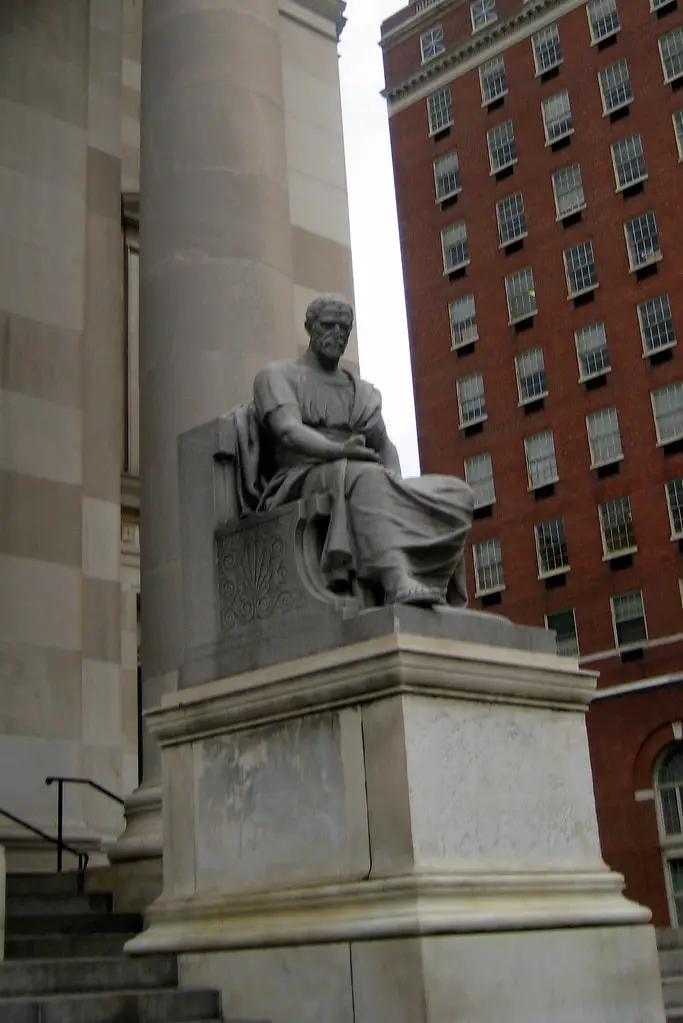
Design and Construction
Behind the courthouse's splendor lie the creative minds of William H. Allen and Richard Williams. Their Beaux Arts architectural design triumphed over submissions from several esteemed architects, marking a pivotal moment in the city's architectural journey.
This victory catapulted Allen and Williams into the limelight and paved the way for New Haven's adoption of the City Beautiful movement. This transformative era aimed to improve public spaces and facilities, a legacy that continues to shape New Haven's cityscape.
Renovation and Preservation
The courthouse has not been without its share of challenges. In 1956, the building teetered on the brink of demolition, a potential loss that would have altered New Haven's skyline and identity. But like a phoenix rising from the ashes, the courthouse proved its resilience.
Fast forward to 2013, and the building's exterior was rejuvenated with a $10.5 million renovation project. This undertaking breathed new life into the New Haven County Courthouse, ensuring its presence for future generations to appreciate.
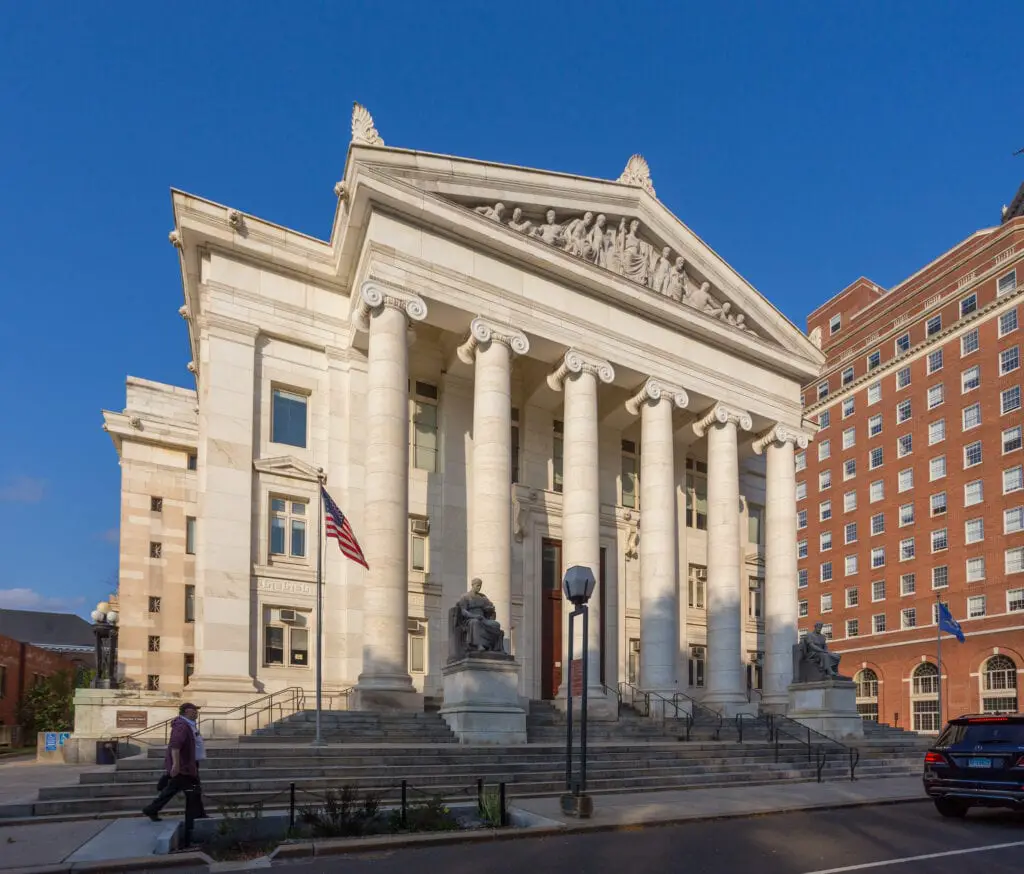
Significant Court Cases
The New Haven County Courthouse is more than an architectural marvel; it's a pillar of justice. Its storied walls have supported some of history's most important court cases.
One such case was Griswold v. Connecticut, a landmark decision that ensured married women could access birth control methods and information. The trial of Black Panther Bobby Seale also unfolded within these walls, further cementing the courthouse's place in legal history.
Art and Sculpture
Beyond its legal and architectural significance, the New Haven County Courthouse is a canvas for artistic expression. The front sculpture, executed by J. Massey Rhind, adds a layer of visual intrigue. Rhind's tympanum proudly displays the figures of Justice, Victory, Precedence, Accuracy, Common Law, Statutory Law, Progress, and Commerce.
Even the most unassuming elements serve a purpose. Take the hidden netting installed across the tympanum: it's a practical measure to prevent hawks from nesting there, a testament to the careful balance between nature and artificial majesty.
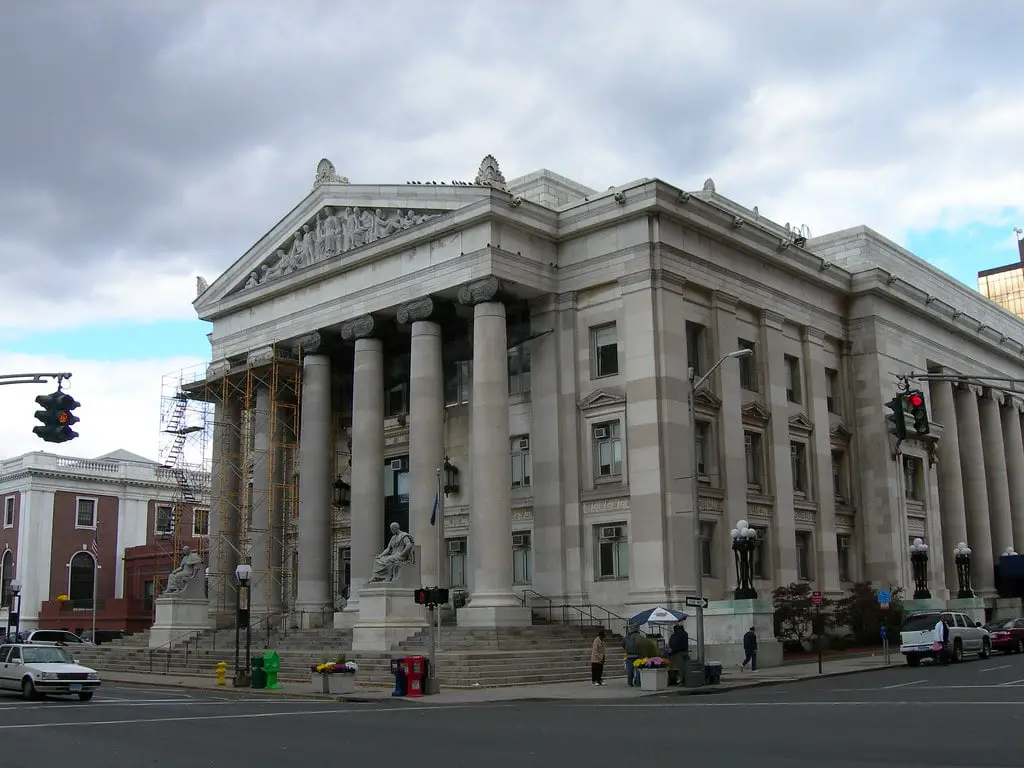
A Reflective Conclusion
In the heart of New Haven stands a beacon of architectural brilliance and historical significance - the New Haven County Courthouse.
As you walk its marble halls, consider the stories it holds within its walls. From the riveting court cases that have shaped our legal landscape to the architectural ingenuity that stands the test of time, this courthouse is a testament to New Haven's rich past and promising future.
Its white Vermont marble facade, intricate Ionic porticos, and richly ornamented interior tell a tale of architectural excellence. William H. Allen and Richard Williams, the creative minds behind the design, contributed not just to the city's skyline but also to its ethos, inspiring the City Beautiful movement in New Haven.
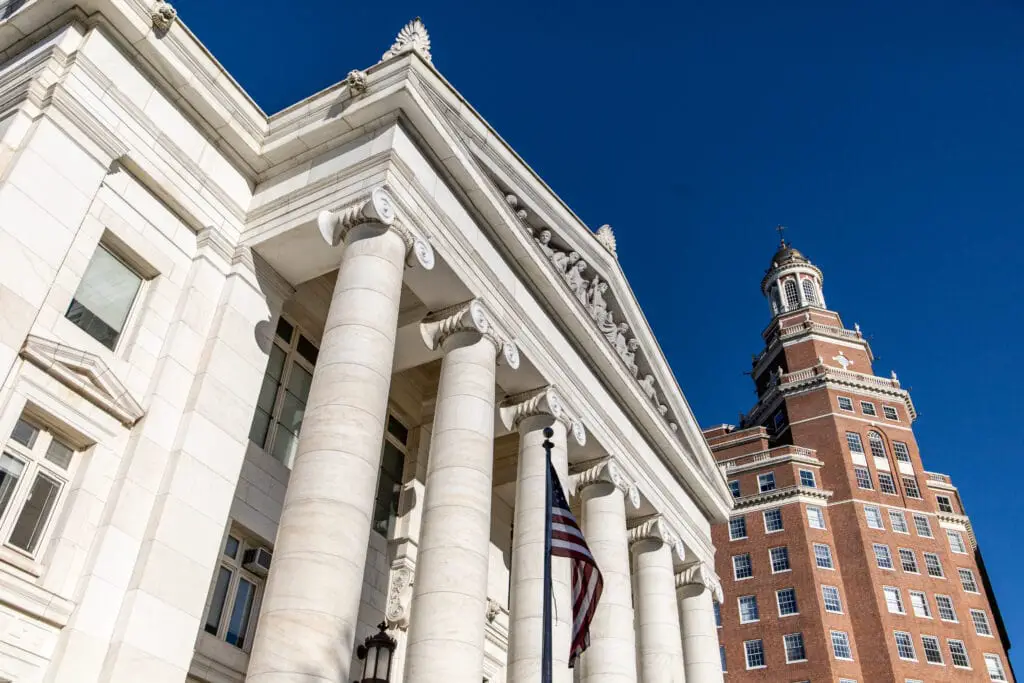
Through its near-demolition and subsequent rejuvenation, the courthouse symbolizes resilience and perseverance, mirroring the city's spirit. The impressive $10.5 million renovation project in 2013 breathed new life into the building, ensuring it stands tall in the face of time.
The courthouse has been the setting of significant court cases, each contributing to our society's tapestry of justice. The Griswold v. Connecticut case and the trial of Black Panther Bobby Seale are but two of the many stories embedded in the courthouse's history.
As you stroll past the courthouse or walk through its doors, please take a moment to appreciate its grandeur. Its presence is a reminder of our past, a symbol of our present, and a beacon for our future. The New Haven County Courthouse is not just a building - it's a living, breathing part of New Haven's story.
